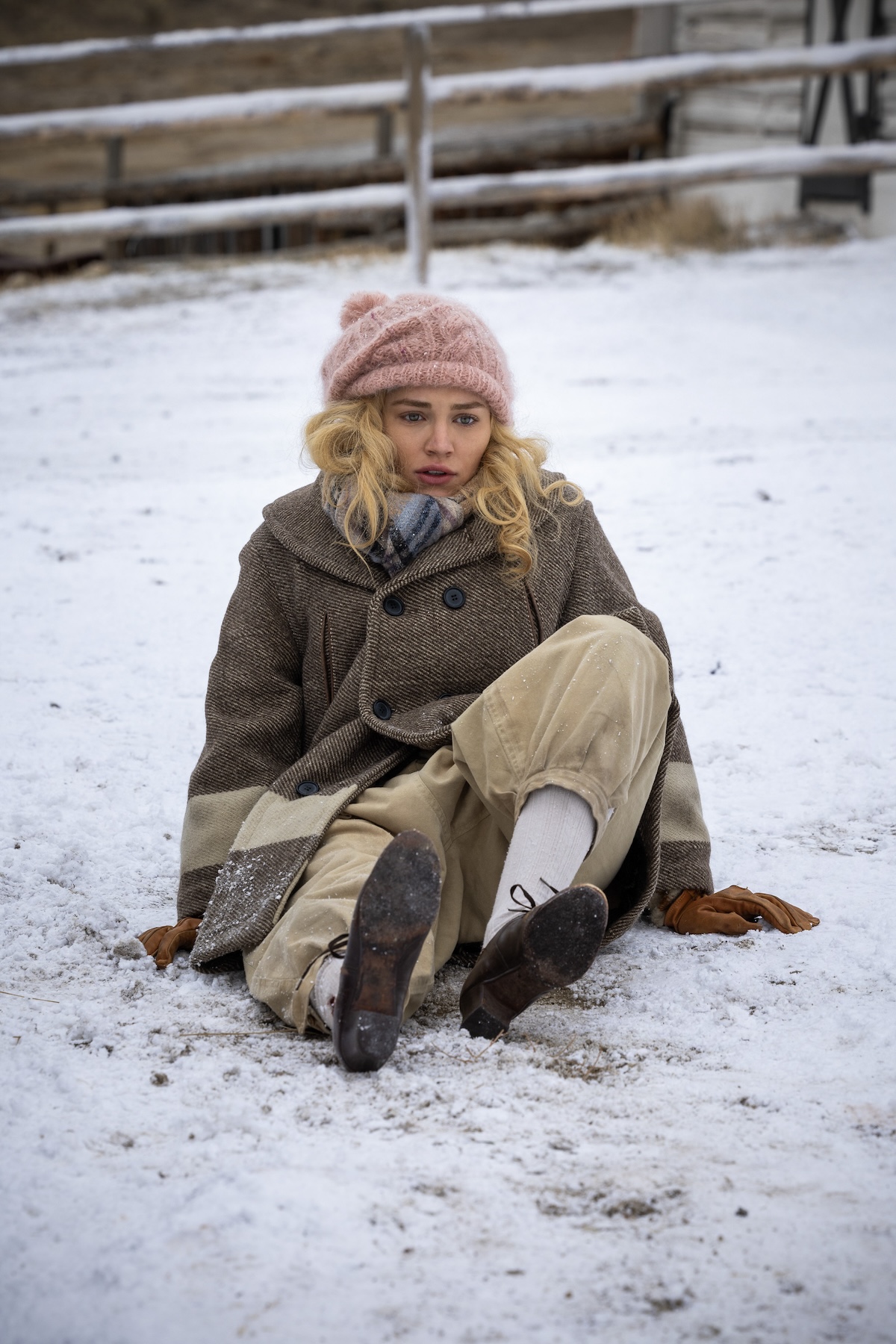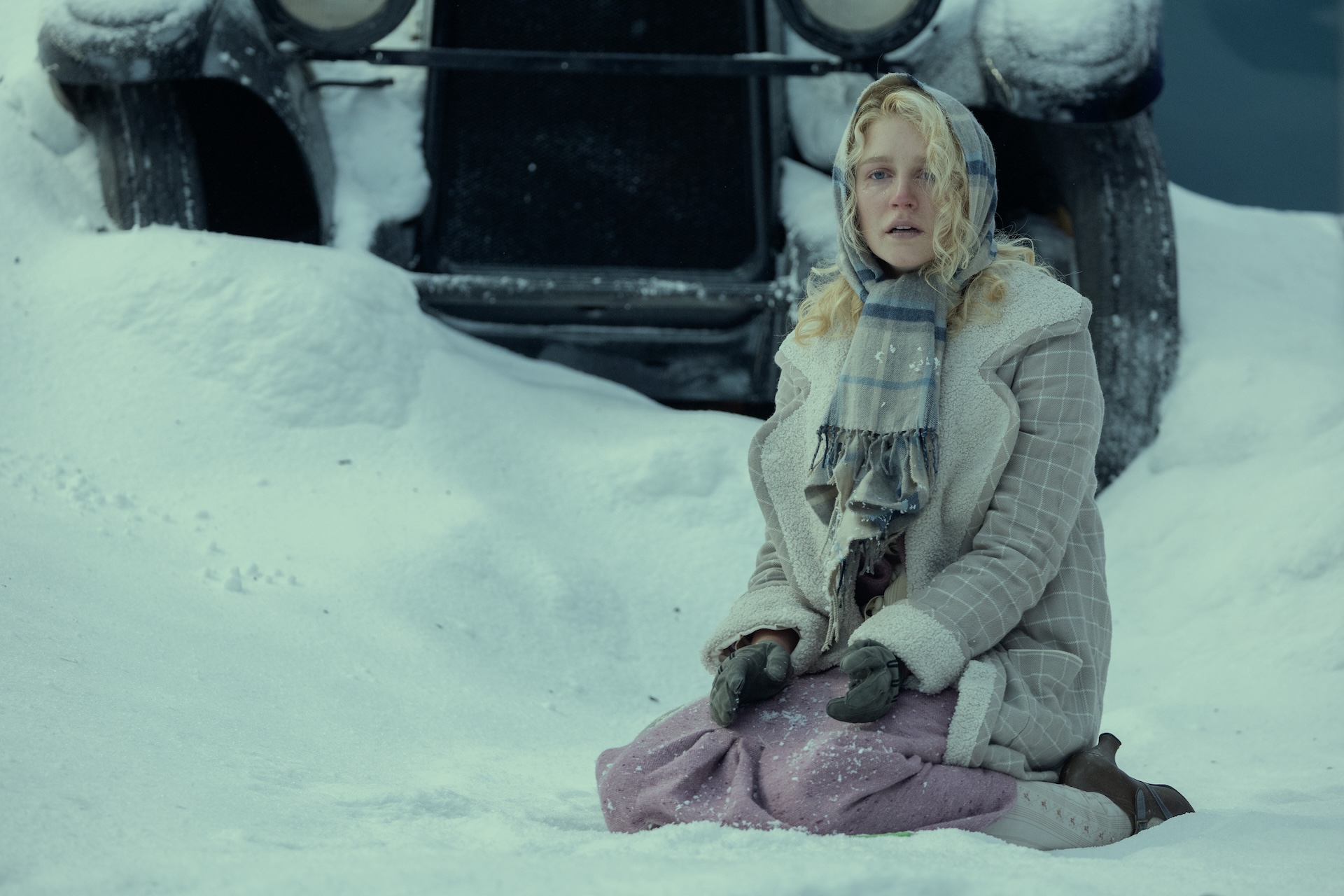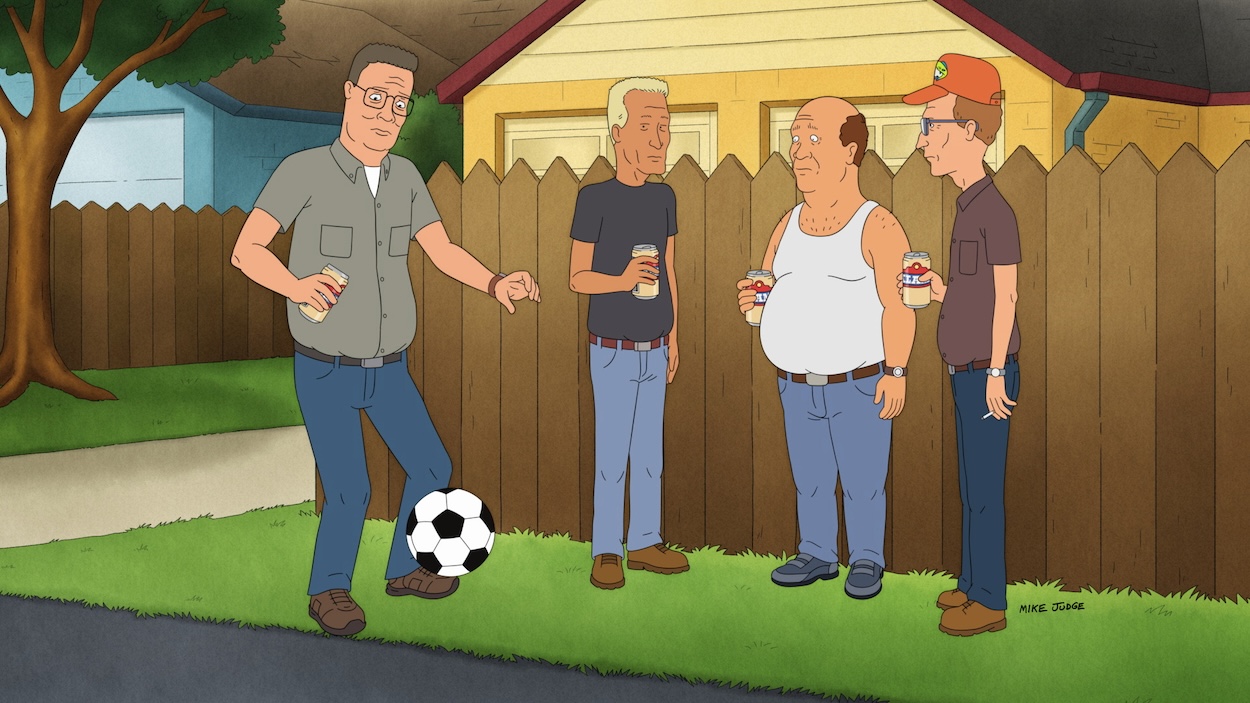When you think of a Western, you’re likely to think of the Wild West: Maybe the post-Civil War days of the 1870s and the Battle of Little Bighorn, or the 1880s and the gunfight at the O.K. Corral.
“1923” then had a particular challenge: To convey a lot of the most recognizable Western motifs — spurs, 10-gallon hats, chaps — but evolved 40 years beyond that most recognizable period. The 1920s were a time when the Wild West of Montana, the home state of Taylor Sheridan‘s central Dutton family, directly collided with the modern age.
Costume designer Janie Bryant had already held the same role on Sheridan’s previous series “1883” and won an Emmy for costume-designing “Deadwood” (in addition to “Mad Men,” for which she received multiple nominations). Because of that previous experience with Westerns, she was very attuned to the subtle differences needed for “1923.” Stuff like how, in “1883,” no cowboys would have worn plaid. In “1923,” following the large influx of Scottish immigrants to Montana in the decades since — Montana at this time would have been a patchwork of accents reflecting all the different ethnicities that had only recently arrived there — plaid would have been widely adopted. Bryant even gives one of the show’s villains, Banner Creighton (Jerome Flynn), a plaid necktie to wear.
Authenticity was everything for Bryant in designing and sourcing the clothes all the characters wear, and she’s been nominated for Outstanding Period Costumes at the 2025 Emmys for “1923.” As Michelle Randolph says in the video below, so much of her apparel on Season 2 of the show — stockings, hats, gloves — were actual vintage items from the 1920s that Bryant found and acquired for her to wear.
“The biggest difference from the 1880s to the 1920s is really the tall, crowned cowboy hats,” Bryant told IndieWire. “If you look at Jacob’s hat, Harrison Ford’s hat — I call his hat ‘The Jacob’ — and it’s a Montana peak crease,” a cowboy hat with a particularly tall center, or crown, much taller than is often depicted for cowboys before the 1920s. But by the ’20s, this had become more the style, in part thanks to the Hollywood actor and movie cowboy Tom Mix, a major screen star in the 1910s and ’20s.
“He is an exaggerated example, but if you look at the cowboy Tom Mix, he had a very, very tall crowned hat,” Bryant said. “That’s a big difference in what the cowboys wore in the 1880s, very different style.” You compare the cowboy hats across “1923” to photos of Mix, and they’re very similar. A superstar in his day, Mix may not be known even to many cinephiles today, but he was on Bryant’s radar. And through its plot, “1923” itself acknowledges the increasing influence of Hollywood even at that time, as several local cowboy characters in the story were said to have fled Montana to try their hand at the growing movie business. (This is a time, mind you, when the actual Wyatt Earp of O.K. Corral fame literally was an advisor for Westerns on Hollywood movie sets.)
And given that Season 2 of “1923” has all of its Montana-set action take place during a particularly brutal winter, capturing authentic winter apparel for this very unique time and place was essential as well. “They wore lots and lots of layers, like layers that the audience didn’t even really see, the thermals, sweaters, layers of just like sweaters, shirts, all those elements,” Bryant said. “They were wearing many layers that you really couldn’t see under their jackets — scarves, gloves, hats — it was all layered on. And I mean, it was really cold.” It even hit a negative 21-degree Fahrenheit wind chill at one point during shooting.

Then there’s the matter of winterizing the costumes to make them look like they’ve been in the cold for a very long time. For much of Season 2, the Yellowstone ranch is cut off from the nearby town of Bozeman because of how impassable the roads and trails are from the snow. And the clothes have to reflect constant use in these harsh conditions.
“I have an amazing distressing and aging team,” Bryant said. “I work with them on aging and distressing the costumes because that’s such an important element for ‘1923,’ that the costumes are aged, that they don’t appear brand new. For [Randolph’s character] Elizabeth, she had many, many multiples of her costume. So she kind of starts clean, and then at different times in the script, we would make it dirty, dirty, dirty, dirty until she’s laid up on the sofa. And I had many, many, many stockings for her that we bloodied. Depending on how long the character is around, I might say, ‘She’s going to have seven multiples.’ So she would have seven of her entire costumes. And then those costumes would be separated by scenes and by dirt, basically [to convey the progression of time]. I mean, let me just say, it’s not real dirt; it’s fake dirt. No one’s in true dirty clothing [laughs].”
Bryant contributed to telling the story of “1923” — i.e., actually advancing the plot — in a huge way through her costumes. The clothes identify different factions and clearly delineate some of the battle lines. “In Bozeman, you see men wearing suits and well-dressed women in the latest fashions,” Bryant said. “That’s in contrast to what’s going on at the Duttons’ Yellowstone ranch, where they’re a little more old-fashioned and they still use horses rather than cars and have a much more traditional cowboy aesthetic.”
Using the clothes to tell the story was particularly important in the case of Julia Schlaepfer’s Alex, the British aristocrat who falls in love with Brandon Sklenar’s Spencer and journeys halfway around the world to be with him again — enduring much in the process.

“Alex really went on a journey where she lost everything,” Bryant said. “Basically, in Season 1, because of her journey with Spencer, she just kept losing things. And so I kind of took that approach with Season 2 as well. Really, all she had left was her coat that she grabbed out of the bathroom stall from the man [at Grand Central Station] who attacked her, and she had the clothes on her back, and then she was given this job to be a waitress on the train. And so those were all very, very important elements of her being stripped away of her costumes basically.”
That becomes even more relevant given her ill-advised decision to accept a car ride through the Dakotas and Montana winter from a well-meaning but somewhat clueless Chicago couple, Paul and Hillary.
“Taylor had written that the ladies weren’t really traveling with gloves because it was the end of March, and they were thinking like, ‘Oh, it’s going to be warm,’” Bryant said. “That was definitely a point in the story where they were not well-prepared. I mean, they had brought some blankets and that kind of thing, but they were not prepared for how cold it was going to be.” Terrible consequences ensue — and all because of the key plot role that the clothes play in the story.
Bryant designed costumes for two of the most acclaimed shows of the 21st century in “Deadwood” and “Mad Men,” shows where the clothes contributed so directly to the narrative. “1923” Season 2 is in every sense a continuation of what she did so well on those shows: Cultivate a sense of total immersion where you lose yourself in another world, and the story can be that much more powerful.



